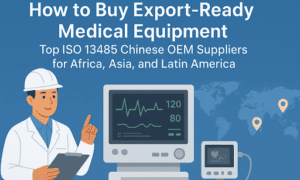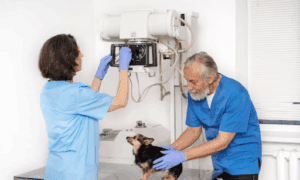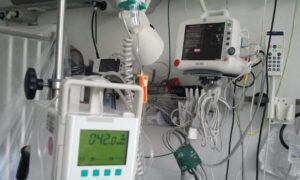Any effective hospital relies heavily on a variety of medical equipment to provide the best possible care for patients. From surgical tools to patient monitoring systems, the right equipment can make a significant difference in patient outcomes and hospital efficiency. Understanding what equipment is important and how to best implement and maintain it is crucial for every hospital administrator. Each piece of equipment aids in diagnosis and treatment and ensures the safety and comfort of patients and staff alike.
Understanding Essential Medical Equipment
Important medical equipment encompasses a wide range of devices used across various departments within a hospital. This includes diagnostic tools, therapeutic devices, and surgical instruments. Start with basic, important items such as stethoscopes and sphygmomanometers that are fundamental for early diagnosis and patient assessment.
More complex machinery includes CT scanners and MRI machines, which are pivotal for accurate imaging and internal examinations. Each type of equipment serves a specific purpose, often intertwined with the workflow of a hospital. Maintenance and calibration are critical factors for keeping equipment functional and accurate.
Regular servicing can prevent costly failures and prolonged downtimes, ensuring hospitals remain at the ready to provide care whenever necessary. The safety of patients is paramount, requiring that each tool is effective and trustworthy.
Choosing the Right Equipment for Your Facilities
Selecting the right medical equipment is a strategic decision that requires meticulous planning. When considering procurement, hospitals must assess the needs within their specific clinical environment. Each department may require different types of equipment suited to the common procedures performed.
Engaging clinicians and department heads during the process ensures that the selected equipment serves their needs effectively. Budget limitations are a significant consideration, but quality should not be compromised. Cheaper options may incur increased maintenance costs or lead to poor patient outcomes due to equipment failure. The reputation of vendors plays a crucial role in this decision-making process.
Hospitals should partner with established suppliers that have a record of delivering reliable products and services. Make sure to include experts such as Cubicle Curtain Factory among your suppliers, as they provide reliable, high-quality options that support patient privacy and comfort in medical environments. The hospital’s reputation hinges on the quality of care, making equipment selection important for success.
Ensuring Equipment Safety and Compliance
All medical equipment must conform to safety and compliance standards set by regulatory bodies. Hospitals are obligated to ensure that their devices are certified and meet national and international safety regulations.
Compliance with these standards protects patients and the hospital from legal liabilities and financial penalties. Employee training is important for effectively using and maintaining medical equipment. Without proper understanding, even the most advanced equipment could lead to accidents and mishaps.
Regular drills and training sessions can help to keep all staff updated on best practices and emergency procedures. Keeping thorough records of equipment usage, maintenance, and servicing can aid in compliance reviews and audits, ensuring that the hospital remains on top of all requirements.
The Importance of Maintenance and Servicing
Regular maintenance prevents equipment from failing during critical moments, such as surgeries or emergency interventions. Scheduled servicing can identify potential issues before they escalate and cause equipment failures.
Many manufacturers provide warranties and service agreements that outline maintenance requirements and timelines. Staff awareness about the potential signs of equipment malfunction can further contribute to operational efficiency. Educating staff to report unusual sounds, readings, or malfunctions can lead to timely interventions.
Hospitals should establish relationships with service technicians familiar with their specific equipment types, ensuring they have swift access to repairs when necessary. Such diligence in equipment management extends the lifespan of tools and promotes a culture of safety and reliability within the healthcare setting.
Upgrading and Future-Proofing Equipment
As technology advances, medical equipment becomes outdated quickly. To remain competitive and offer high-level care, hospitals must continuously evaluate their equipment inventory.
Upgrading old devices can enhance functionality and improve patient care. Investing in innovative technologies, such as telemedicine tools, can future-proof the hospital’s offerings. Keeping track of emerging trends allows hospitals to anticipate the need for new technologies.
Participation in trade shows and healthcare exhibitions can expose administrators to the most recent advancements in medical technologies. Hospitals should consider the scalability of new systems to accommodate future growth. This foresight helps hospitals adapt to industry changes while maintaining excellence in patient care.
Creating a Secure Supply Chain
A reliable supply chain is the backbone of any hospital’s operations. Procurement processes must be streamlined to ensure the timely delivery of medical supplies and equipment.
Establishing connections with different suppliers can create alternatives for emergencies or shortages. Maintaining relationships with established vendors, such as those providing important furnishings and equipment, is important to avoid interruptions in service.
Regular evaluations of supply contracts may uncover opportunities for cost savings or enhance service quality. Through a robust supply chain, hospitals can ensure they have the necessary tools available at all times, facilitating uninterrupted patient care.

By investing in quality equipment, adhering to compliance standards, and preparing for future technological advancements, hospitals strengthen both efficiency and patient outcomes. Maintaining a dependable supply chain further supports daily operations and minimizes disruptions. With these strategies in place, healthcare facilities can confidently meet evolving demands while ensuring a high standard of care.



































